The resplendent image of a medieval “knight in shining armor” is even a trope of popular culture. But beyond visual magnificence and social elitism, the foremost historical factor that can be associated with a knight obviously relates to his martial prowess on the battlefield.
This scope of ardor, mobility, and even ruthlessness was kick-started by none other than the Normans, who initially hailed from Normandy, but carried forth their Viking legacy, and carved up a plethora of kingdoms and political entities in distant parts of Europe and even the Levant. So without further ado, let us take a gander at the incredible history of the Norman knights – often praised as the “sword arm” of Western European Christendom.
Contents
The Lance
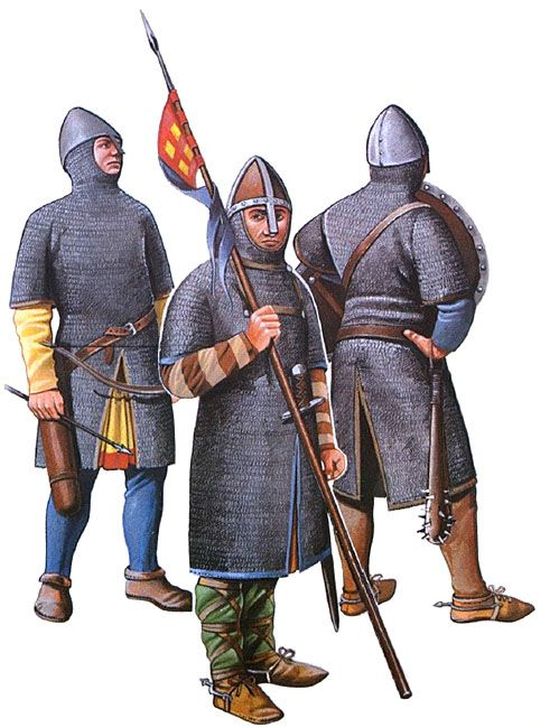
In one of our previous articles about medieval knights, we talked about the importance of swords, both from the symbolic perspective (given how the cross-guard and the grip together resembled the cruciform) and its association as an instrument of status (a cultural factor that was possibly adopted from the ancient Celts and Germanic tribes). However, the weapon that truly transformed the knights (especially the Norman knights) into a battlefield force to be reckoned with, pertains to the lance.
But what exactly is a lance, especially in its historical context? In simple terms, from the 10th to 11th century, the lance wielded by a Norman knight generally comprised a straightforward stout spear, with its plain ash shaft fitted with a leaf-shaped iron head and a long socket.
In essence, the weapon form (in the early middle ages) harked back to the kontos-type spear used by the heavy cavalry of the ancient times and late antiquity, like the famed ‘Companions’ (Hetairoi) of Alexander and the renowned Savaran cataphracts of Persia.
Now intriguingly enough, the Bayeux Tapestry shows how many of the Norman knights held their lance overhead, which might be interpreted as a stabbing action. However in a few cases, the spear is shown as being thrown mid-air, thus suggesting the use of some lance-like weapons (or short spears) as javelins from the horse-back (though the view can be disputed).
In any case, the status of the lance as a knight’s weapon was mirrored by the ones fitted with tailed pennons that often carried forth the heraldry or symbols associated with the carrier, like the raven standards depicted in the Bayeux Tapestry.
The ‘Weight’ Of Squires
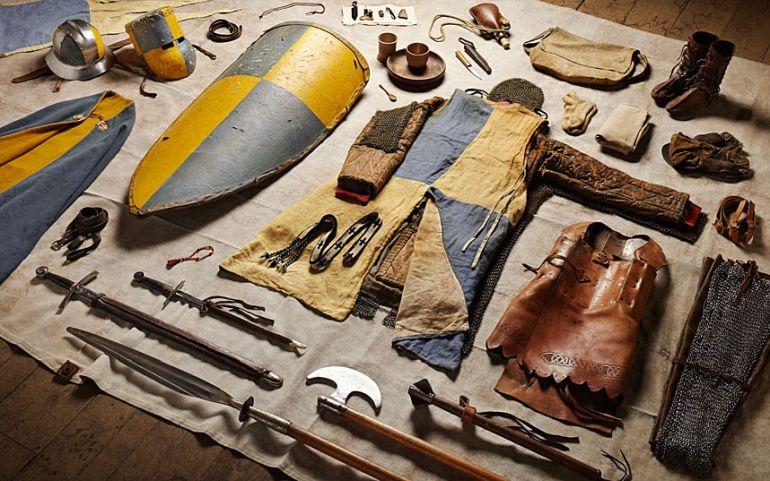
Now while our popular notion suggests that squires were essentially knights in training, and thus by virtue were of noble birth, historicity states that the Norman knights also employed a large number of young men of ‘non-noble’ origins as their attendants. As a matter of fact, many of these ‘squires’ were actually paid in money, though the sum was offered quite irregularly.
In any case, the job of a medieval squire was quite unenviable, with his foremost duty requiring him to carry the heavy burden of his master (knight), including the luggage and hefty weapons. He did this with an aid of a pack horse or rouncy and led the mighty destrier warhorse of his master through the routes.
During times of campaign, the squire was charged with setting up the tent of the knight. At times he also had to set forth at a moment’s notice for foraging and locating water holes that would sate the logistical requirements of the heavily armed and noble horsemen. And as many pop-cultural aficionados would know, the squires (of noble birth) were also burdened with the duty of dressing up the knights in their panoply before the commencement of a battle.
And since we brought the scope of a battle, in spite of his position as a ‘helper’ of a knight, the squire was expected to actively take part in military encounters, especially when the knight was dismounted and thus needed his reserved war horse in the midst of the fray. Moreover, at times, few of the noble squires even put forth their claims to join the fight in protracted siege battles, thus mirroring a bloody rite of passage pertaining to their future knighthood.
The ‘Slap’ And Knights-Errant
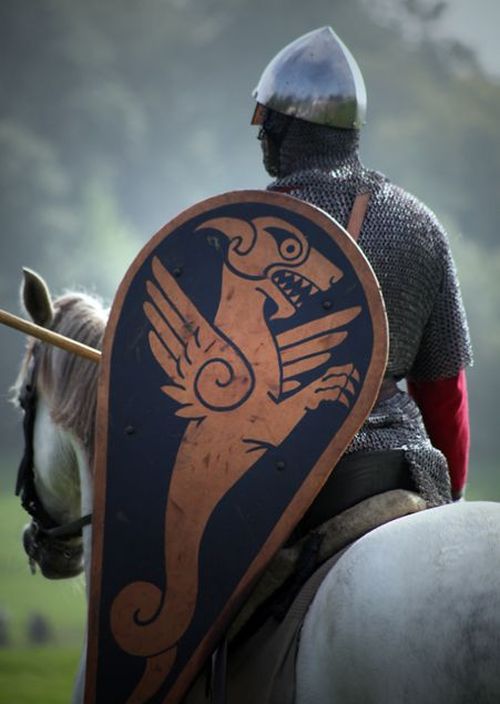
Like most of their European counterparts, the Norman knights were basically ‘chosen’ based on their lineage, and thus the 8-10-year-old boys (puers) were sent to a lord’s household to take their training in combat and (most importantly) follow orders. Beyond the age of 14, many teenagers were inducted into the ranks of the squires.
And finally, by the age of 21, they were dubbed as knights – with a seemingly odd initiation rite where the young man was given a hefty blow about the ears. He had to take on the blow without retaliating, thus symbolically suggesting that it was the only physical blow after knighthood that he was going to willingly endure.
These unmarried youths (known as juvenis) were the renowned knights-errant of numerous medieval songs and poems, who supposedly followed the rigors of chivalry to seek fame, fortunes, and noble wives. In practical terms, many of the young men were retained as household knights, while the others plied their trade as mercenaries.
Many of the younger sons, who had little chance of inheriting their predecessor’s properties, tried their best to marry the rich heiresses whose patrimonies they can lay claim to. Additionally, by the 11th century, the young Norman knights took part in tournaments that entailed free-form exercises (like the French melee) in open fields.
These ‘encounters’ almost played out like actual gruesome battles, with opposing teams of knights fighting against each other in their full panoply while being armed with sharp weapons. The defeated knights, as a rule, had to forfeit their warhorse and rich armor, thus providing an incentive for many a cash-strapped knight errant of the period, in spite of the imminent physical danger.
Training Since Puberty
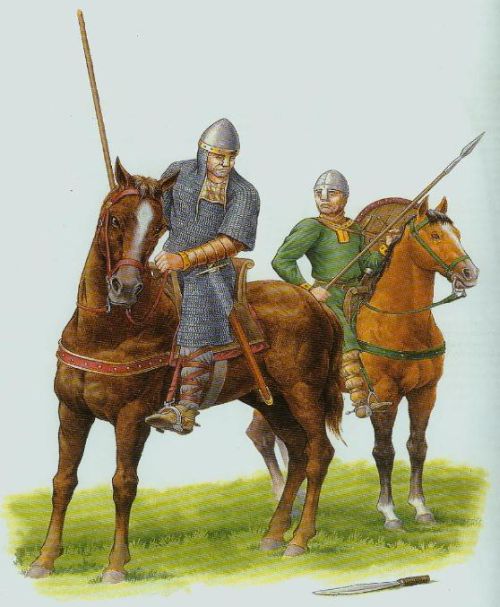
While the puers were possibly inducted into a lord’s household by the age of 10, a knight’s real combat training only started after the age of 12 or 13. One of the first exercises the that the child teenager was taught entailed riding a horse, thus mirroring the contemporary remark (paraphrased by eminent French historian Marc Bloch) – ‘he who has stayed at school till the age of twelve, and never ridden a horse, is fit only to be a priest’.
To that end, it was no easy task to maintain control over the imposing and mulish stallions, especially when maneuvering had to be done with a shield in the left hand and a thrusting weapon (like a lance) in the right. Now when riding the war-horse, the left hand was obviously used to hold the rein; but during the heat of the combat, the shield had to be kept still, and hence the rein was often laid on the horse’s neck, which suggests a delicate balancing act on the part of the rider.
And while the shield was an important part of Norman’s knight panoply, it was the lance and its momentum that made these heavy horsemen truly effective on the battlefield (especially with the posture of couched lance). However, at times, the sheer impact of the lance and its consequent shock could even dismount the knight-in-training from the horseback.
Suffice it to say, many practice runs resulted in serious injuries and even rare fatalities among the trainees. So over time, training was more focused on the ‘optimized’ gripping of the lance that allowed the rider to stay on the horse after a successful charge.
In that regard, 14th-century manuscripts depict particular constructs of wooden horses with wheels. The trainee was mounted atop the construct, while his companions would pull the horse at full speed, hurling the rider towards a shield pinned along with a post. The trainee had to aim for that shield with his lance, and the wooden horse continued to be dragged even after the impact was made, thus preparing the knight to brace (with the help of his legs) after the momentum shock.
Other training methods involved practicing sword cuts and parries, often with the help of wooden posts. And interestingly, harking back to the ancient Romans, many of the blunt weapons used for training were often of double weight, thereby increasing the stamina and fortitude of the trainees, which in turn compensated for their heavy gear in actual battle scenarios.
The Dangerous Hunts
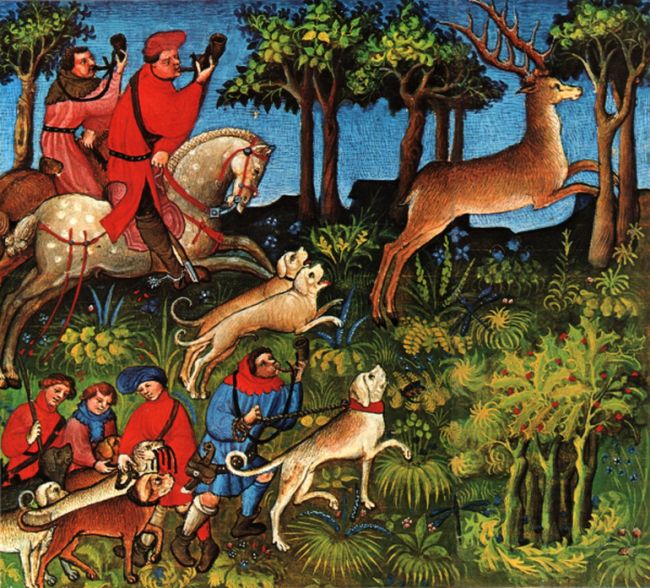
The martial range of medieval Norman culture, partly inherited due to their Viking origins, was not just limited to the rigorous (and often brutal) training fields. Much like the near-contemporary Mongols, the Norman military took particular pride in their hunting skills.
The primal side of this scope was obviously related to gathering food. But as for the elite sections of the Norman society, including the knights, hunting provided them with the opportunity to practice their horsemanship and endurance, especially on the rough terrains of the countryside.
And on rare occasions, hunting was also the way one could showcase his courage and martial skill when the prey tended to be dangerous like wild boar, stag, or even brown bear. To that end, Richard of Normandy, the second son of William the Conqueror, was possibly killed by a stag while hunting in the New Forest, a tract of heathland and woods that was proclaimed as a royal forest by William himself.
Interestingly enough, by the later years, many of the Norman knights even practiced their archery skills on the quicker prey – as the bow was raised to being a prestigious weapon after the Norman conquest of England.
The Tactic Of Couched Lance
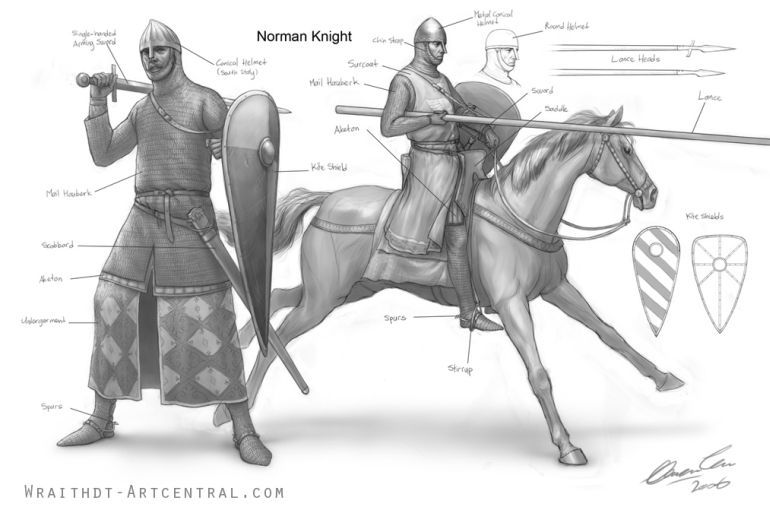
As we mentioned at the beginning of the post, the martial scope that differentiated the medieval Norman knights (and their European counterparts) from the ordinary soldiers was directly related to the momentous charge they could mount on a battlefield.
And the Norman penchant for fast and brutal warfare was rather fueled by the tactical development and adoption of the couched lance (circa late 11th century AD), which was gripped firmly between the upper arm and the chest.
This allowed the knight to mount a forceful charge through the ranks of enemy infantry (who were often loosely formed), with the heavy lance epitomizing the momentum of the heavily armored cavalryman in his full motion.
And as can be surmised from this description, the infantrymen (especially the lesser trained ones) also had to deal with the devastating psychological impact of an imposing band of war-horses and their expert riders in their full panoply and armament, riding towards them in their greatest speed and momentum.
This tactical ambit of the medieval battlefield may seem simple and brutal, as aptly described by Anna Comnena, a Byzantine princess (and historian) who effusively spoke of how the knights of the First Crusade could punch through the walls of Babylon with their devastating charge. However when it came to organizing massed charges, much had to do with the discipline and training imparted to each of the Norman knights participating in the maneuver.
For example, before mounting a charge, the group of heavy horsemen was assembled in numbers of 25 to 50, known as the conrois. The conrois kept its formation very tight, so much so that it was said that even an apple could not pass through the gaps between the horses.
Initially, the knights also kept their lances upright and their horses on a trot, so as not to loosen the formation. And only on the final yards were the horses made to gallop (and lances put forward), thereby preserving their strength and initiative for the momentum of impact.
Now when it came to practicality, some historians are still not sure if the same ‘charging’ tactic (and its psychological impact) could be mounted against war-hardened infantry forces with tighter formations and better nerves.
But without a doubt, the couched lance posture in itself was complemented (possibly in the later years) by innovations such as a higher-set war saddle with a protective pommel, a cantle for the hip, and a breast strap for absorbing the shock.
Weakness Against Arrows
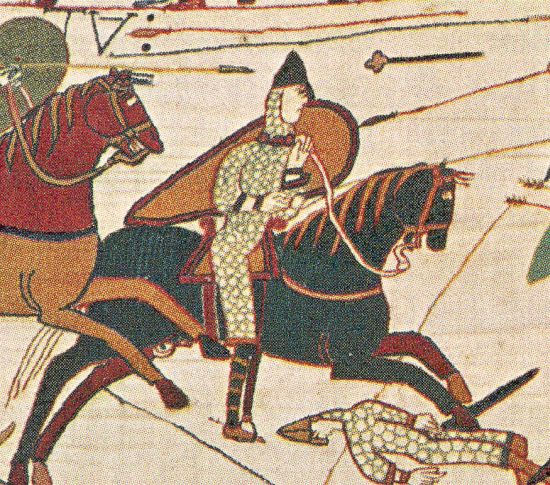
Interestingly enough, our popular notion presents the scenario where the armored knight was the undisputed master of the battlefield in medieval Europe from the 12th-14th century. But historically only a part of this scope was true. In that regard, while the Norman knights were without a doubt the ‘game-changer’ on the actual battlefield, they had their fair share of weaknesses.
One of the primary ones among them had to do with the projectiles aimed at the knights. Horses were especially vulnerable to the enemy arrows since most of them were unarmored. On top of that, the impact of the arrows on the horseman in his full momentum could pose significant challenges, with a few well-placed volleys even leading to the dismounting of the knight from his horse.
The Crusaders learned it the hard way when faced with the incredible mobility of Turkic horse archers in the battlefields of the Levant and Anatolia. As a result, the predominately Norman knights of the Principality of Antioch relied more on coordination between their different contingents and troops-types, to counter the agile foes.
One of such maneuver entailed the ‘partnership’ system between the heavy cavalry, infantry, and crossbowmen, who planned and progressed together to keep the mounted enemies at bay. With the passage of time and influence from the Eastern armies, the Normans (and their Crusader brethren) also adopted the tactics of ambushing, maintaining a reserve body of knights for counter-flanking, and occasionally retreating (behind a solid wall of infantry).
And as the maneuvers became more complex, the Norman knights practiced the habit of repeated charging and harassing in smaller groups, as opposed to a grandiosely conceived single massed charge.
The Feigned Flight
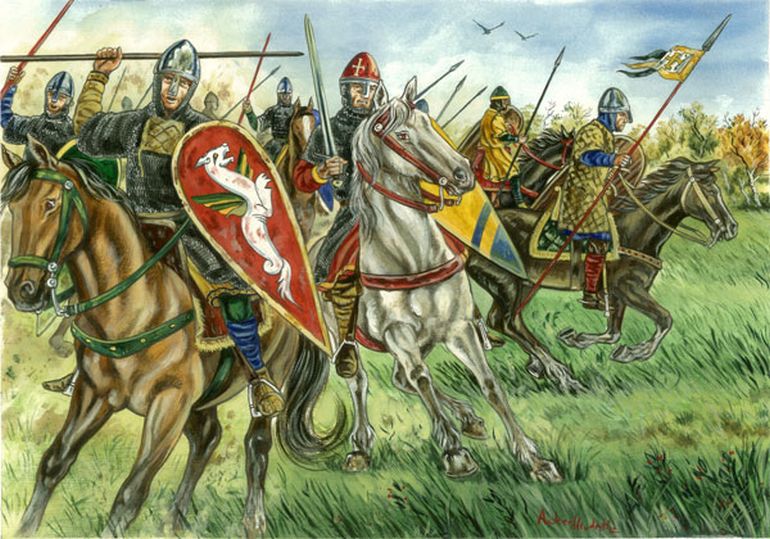
Unlike many of the contemporary European elite societies, the Norman knights were not averse to adopting the tactical advantages of other cultures. One such example might have related to the use of feigned flight in the midst of battles, probably inspired by the 9th-century Bretons.
Now while ‘knightly’ culture and its values of chivalry detested retreat (if even feigned) from the battlefield, the Norman formations entailing a smaller group of horsemen (conrois) were suited to such flexible ruses.
In essence, the feigned flight was made to lure out the enemy soldiers (mostly their horsemen), which in effect disturbed the opposing tight formations of knights or heavy infantry, thus providing the initiative to strike for the Norman side.
And while the notion of luring out the enemy forces might seem straightforward, in practical circumstances, the stratagem required intense levels of training and coordination among the Norman knight conrois participating in the maneuver.
Furthermore, the sight of flight (of the knights), even if used as a gimmick, could have demoralized the common soldiers of the army. So such tactical gambits were possibly decided before the commencement of the battle, by keeping various modes of communication open for most of the commanders on the Norman side.
The ‘Different’ Norman Knights
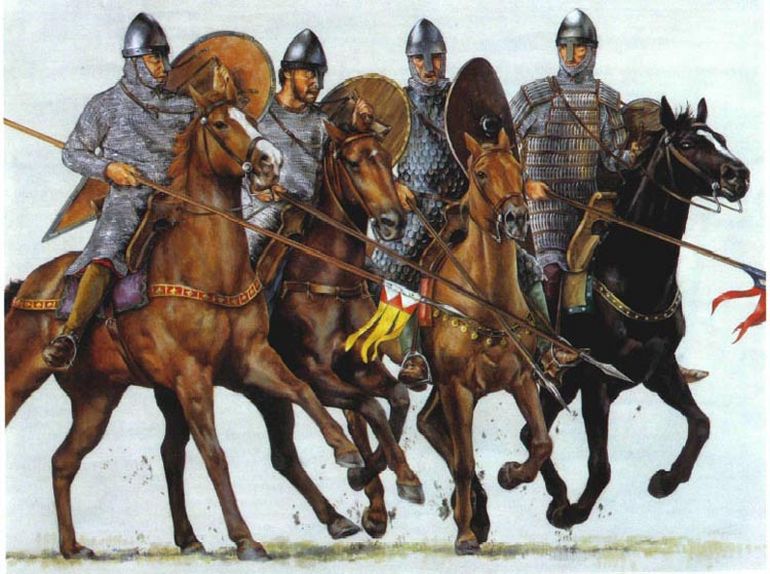
As we fleetingly mentioned in one of the earlier entries, the Norman knights didn’t really pertain to a particular group of soldiers with uniform bearings. Once again mirroring the societal values of medieval Western Europe, the knights of Norman origin were found in different walks of the military, spread across various estates, fiefs, and even kingdoms.
To that end, it was the eldest son who inherited the patrimony and thus continued the hereditary generations of land-holding knightly class in the feudal society. But the options were not so clear for the younger sons, who either chose a military career or went the path of monkhood.
Considering the first choice, some opted to become vassals of the great lords. They were counted among the household knights and given prime parcels of lands around the lord’s estates. In return, these knights held up the tradition of loyalty, one of the enduring legacies of ancient cultures such as the Celts and Germanic tribes. Others took the more ‘diplomatic’ route of settling down and making their fortune, by marrying potentially rich heiresses. A few even went on to make their fortune through tournaments.
But arguably the most important group of Norman knights, at least from the historical perspective, were the soldiers of fortune who took it upon themselves to carve their own kingdoms, in the regions of Italy, Sicily, and even the upper Levant. Interestingly enough, in the initial years of the 11th century AD, a major percentage of the Normans arriving in Sicily were actually employed as mercenaries by the Eastern Roman (Byzantine) Empire.
Culture And Christianity
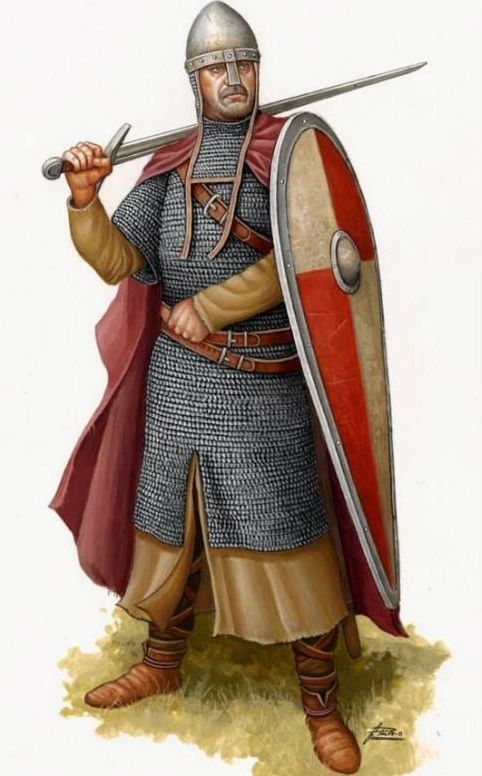
In most of medieval Europe, the elite status of Norman knights, along with their association with ‘higher’ martial pursuits, made them the crème de la crème of military endeavors, especially when it came to expansionist feats.
And strengthened by the ideals of Gens Normannorum (an indigenous sense of identity and even destiny), many of the Normans did display their set of distinct cultural attributes. Some of these characteristics were true ‘Norman-like’ – given their penchant for adaptability and military resourcefulness. While some others were clearly inspired by different cultures, like the notions of chivalry and romanticism borrowed from southern France.
Intriguingly enough, the Normans, with their very name being derived from the Latin Nortmanni – denoted the Northmen (or Norsemen) raiders from Scandinavia. Simply put, they were descendants of the Vikings who settled in the northwestern French province of Neustria (later termed Normandy, after the Normans).
But in a twist of history, in spite of their pagan heritage, future generations of Norman knights turned out to be the ‘sword arm’ of Christianity, with their conquests and influence reaching the far-flung corners of Europe and even the Levant.
Interestingly, the Normans also established a long-standing yet transparent relationship with the Papacy, as is evident from William the Conqueror’s alliance with the Vatican. In that regard, many of the ecclesiastical leaders of the church came from the Norman aristocracy, while secular Norman lords quite freely founded medieval monasteries in their realms. Many of these ‘church lands’ owed military service to their Norman overlords and as such resource-rich abbeys probably funded the first knights.
Sources: Spartacus-Educational / Albion-Swords / Regia Anglorum
Book References: The Normans in Sicily: The Normans in the South 1016-1130 and the Kingdom in the Sun 1130-1194 (By John Julius Norwich) / The Normans (By David Nicolle) / Norman Knight 950-1204 AD (By Christopher Gravett) / Anglo-Norman Warfare: Studies in Late Anglo-Saxon and Anglo-Norman Military (By Matthew Strickland)
And in case we have not attributed or misattributed any image, artwork, or photograph, we apologize in advance. Please let us know via the ‘Contact Us’ link, provided both above the top bar and at the bottom bar of the page.
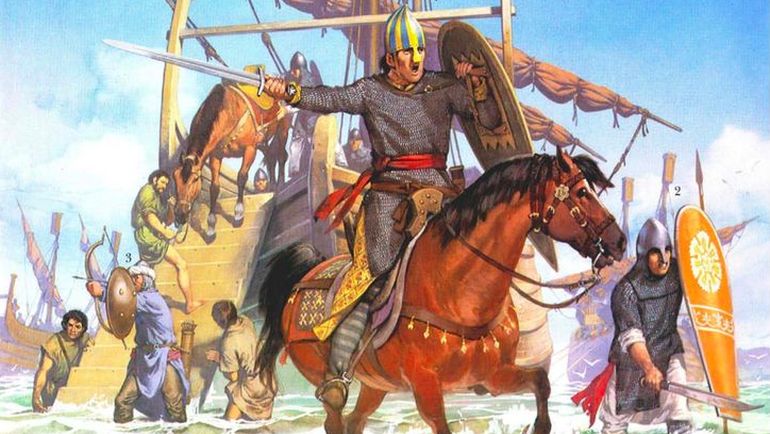
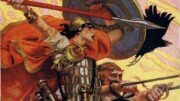

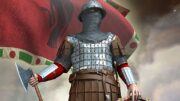
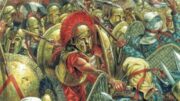
Be the first to comment on "Norman Knights: The Sword Arm of Western Europe"